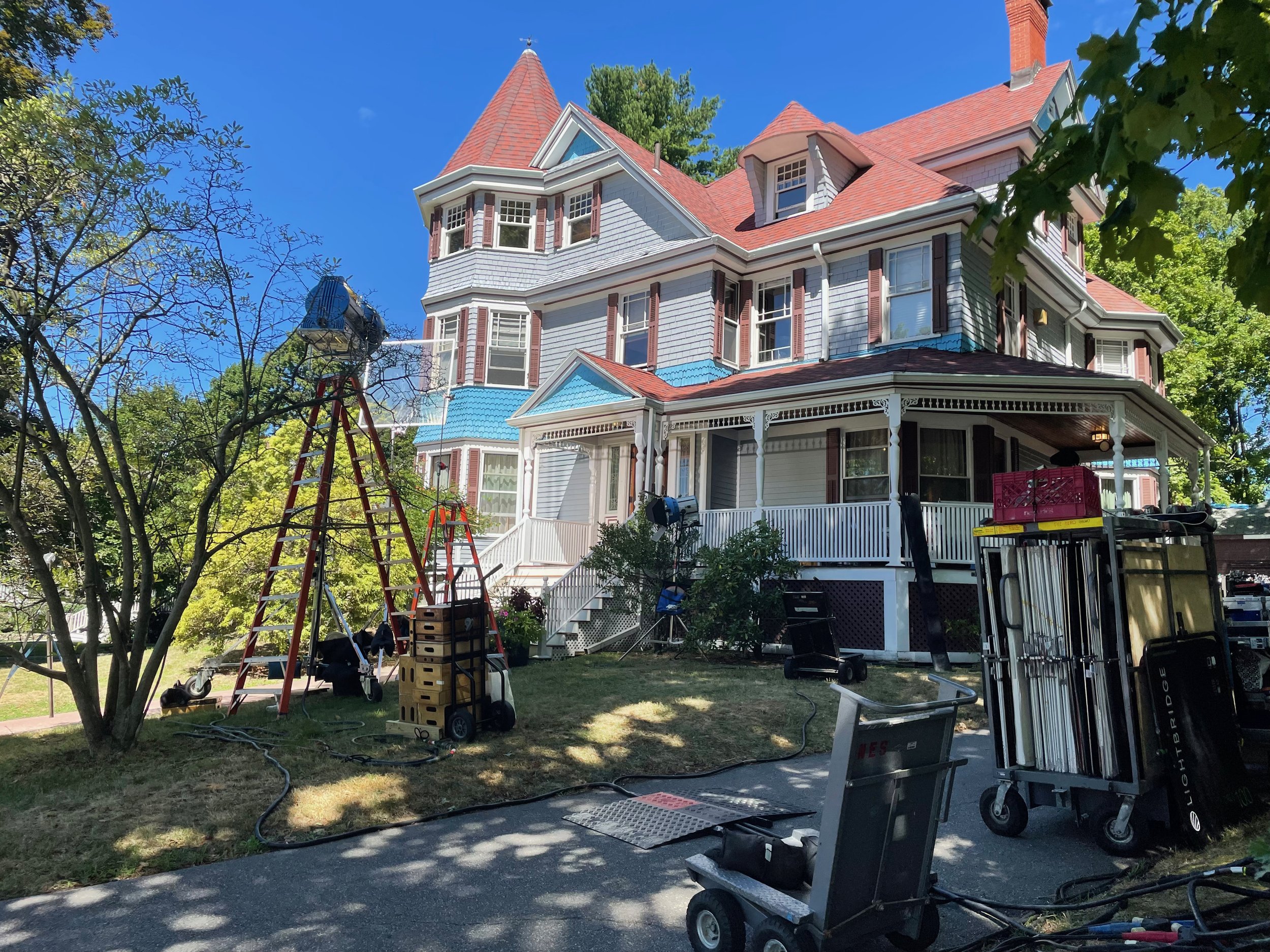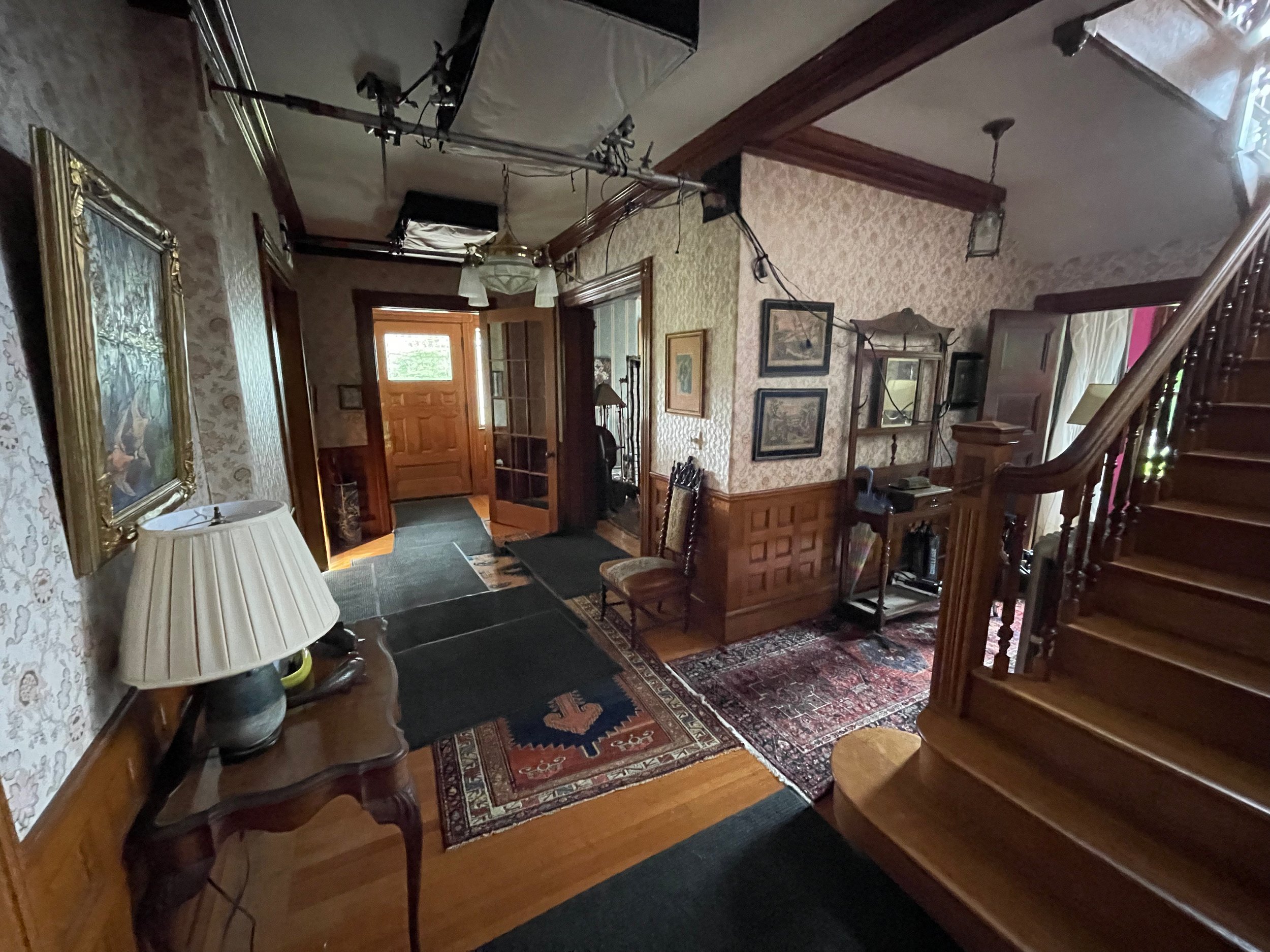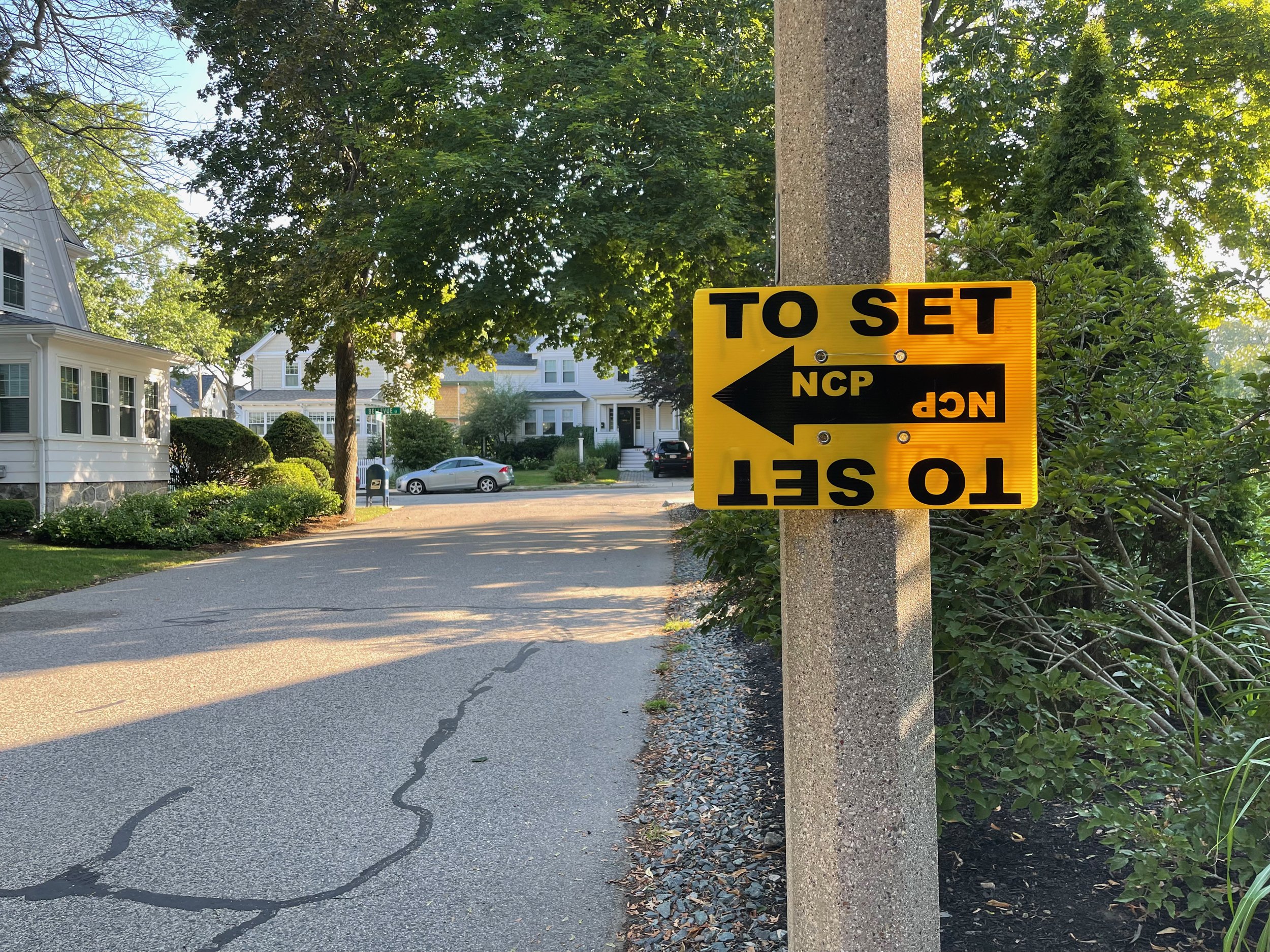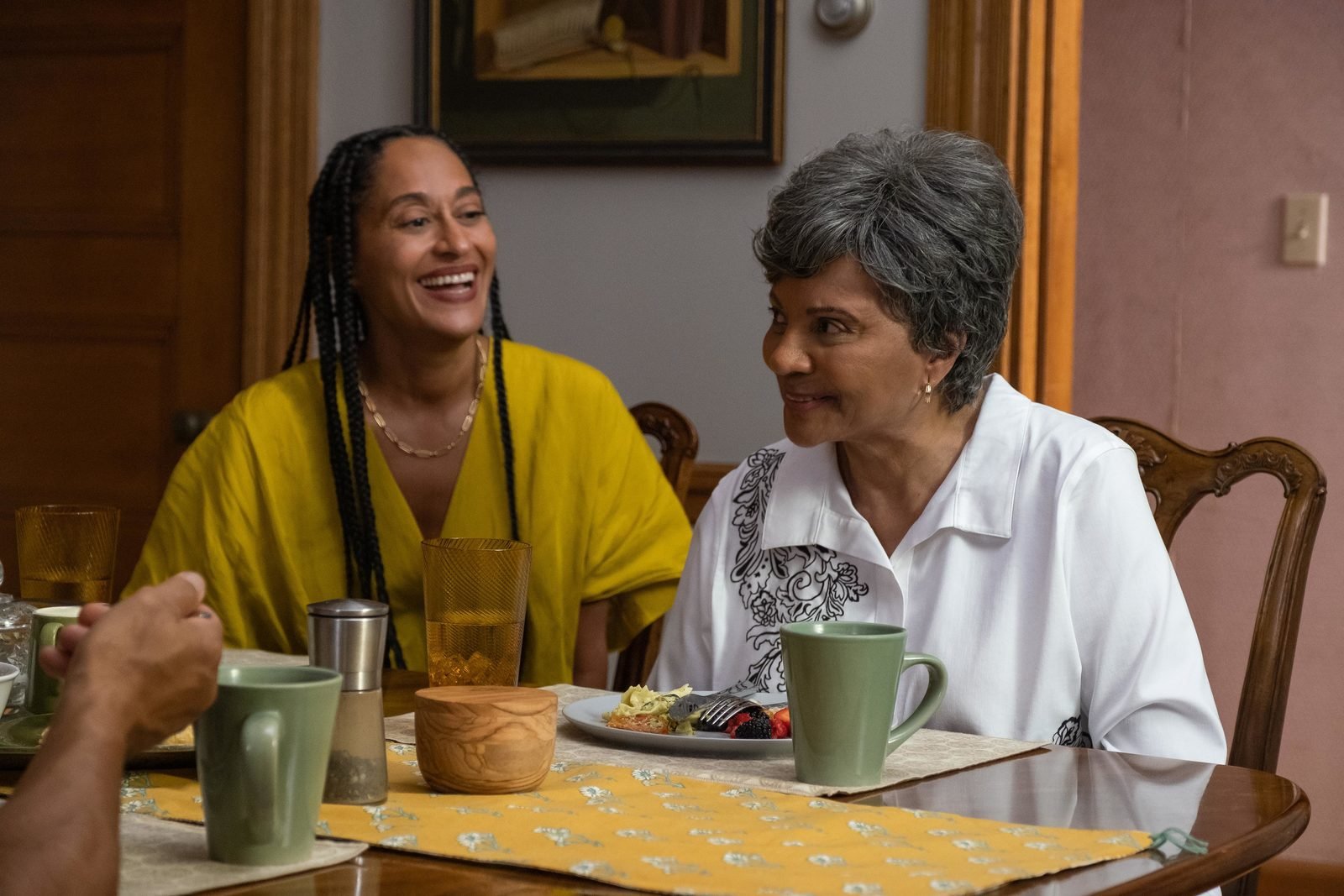My architectural gem of a house just launched me to stardom. Well, sort of.
Author’s house during filming. DANIEL G. STEGER
The first time I saw actors Jeffrey Wright and Tracee Ellis Ross waiting to open my front door, I felt as gobsmacked as you might imagine.
How our house, a Victorian built in 1895 with a turret and wide front porch, became a set in the recently Oscar-nominated film “American Fiction” is a story that began the day Rolando and I closed on our new home. Newlyweds who had been married just six months, we arrived at the house in the Bellevue Hill section of West Roxbury — and found a note from a local scouting agency. They wanted to know if they could view the interior.
Rolando is a lawyer. He immediately sniffed a scam. I’m an architect. I immediately said yes. If Hollywood found the sweep of our square footage and the detailing on the fireplace surrounds worthy, who was I to stand in the way?
It all started with a walk-through by an assistant who made it clear she was at the bottom of the pecking order. (Her name was Andie, just like the lowly assistant played by Anne Hathaway in “The Devil Wears Prada.” I took it as a sign.) Then came the film’s screenwriter and director Cord Jefferson. Our home was auditioning. It got a callback when yet another group came through, and then it finally got the part. Our house was ready to take its star turn.
The set designer arrived to see if there was any of our furniture she wanted to use (no), and the crew stashed all our stuff in rooms they weren’t going to shoot in. They stashed the two of us and our 9-year-old Labradoodle, Gus, at the Residence Inn in Dedham, stressing that this was “an independent, low-budget film.”
Setting the stage in the author's front hall, complete with the set designer-chosen chandelier. DANIEL G. STEGER
I’m pretty sure the actors didn’t stay at the Residence Inn. At least, Rolando and I never ran across them. We never even got a chance to find out what Jeffrey Wright thought of his assigned half bath off the kitchen — a tired powder room with a wall that didn’t reach all the way to the ceiling. Or what Tracee Ellis Ross thought of her half bath under the third-floor eaves.
Before shooting began, the house had an appointment with hair and makeup. Dozens of people descended like a SWAT team of grips, wanting to know things like where the electrical panel was and pulling out tools to replace our front-hall chandelier with a set designer-chosen one. The drapes were swapped out for sheer panels with blue velvet overlays. One afternoon a van approached and the crew pulled out what seemed like 20 different rugs to see which they wanted to use in each room.
The crew also had meetings with the neighbors to garner local buy-in. We were taking Gus for a walk at some point when we saw a gaggle of people standing around the site location manager. But any concerns, whatever they were, were assuaged. After all, our neighborhood was going to be famous.
Quiet on the set, please. DANIEL G. STEGER
Although there were easily 75 to 100 people on site during filming (someone really did have the job of calling “Quiet on the set!”), things usually proceeded smoothly. The only real scuffle occurred when we walked into our kitchen early one morning to find dishes and other things strewn about — wedding gifts that we ourselves had barely used, salt and pepper shakers, an heirloom lamp handed down from my grandmother. We had been promised that none of our personal items would be picked through. The worst part: The scene — a discussion over a meal in the dining room — was cut from the movie.
Tracee Ellis Ross, starring as Lisa, and Leslie Uggams, playing her mother, Agnes, during a scene filmed in the author's dining room. CLAIREFOLGER
But when you finally go and see a film more than a year after it wraps, and there’s Leslie Uggams coming down your staircase, Jeffrey Wright sitting in your office reimagined as his childhood bedroom, and Sterling K. Brown swimming in a backyard pool that you don’t actually have, all is forgiven. We’ve now gone to see the movie a number of times (how many is not important), and I marvel that I had the architectural vision to choose a house that would be home to a movie great enough to garner five Academy Award nominations — for best picture, best actor (Wright), and best supporting actor (Brown), among others.
What I would like to suggest, in fact, is that it’s my home that’s up for an Oscar. And since my home is just an extension of me, it’s really I, the film’s starchitect, who have gotten the nod.
I’d like to thank the Academy.
Daniel G. Steger is the founder and principal of DGS/a Architecture, a Boston-based studio that specializes in custom residential design, renovations, and additions.




